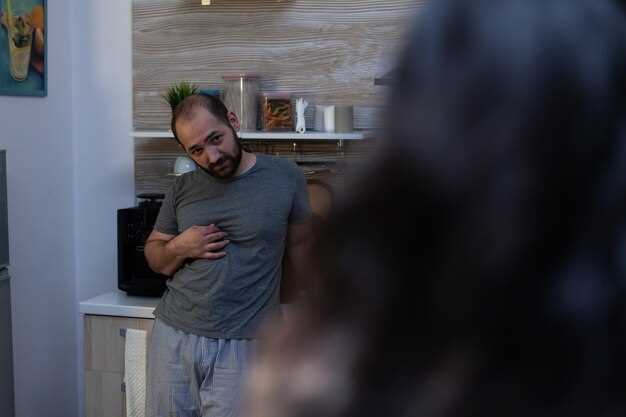Need a checklist? Pack keys, transit backup, weather-aware outfit, cash plus card, and a short list of two venue alternatives near where you are living. Lord over none of these details; doing too much polish increases stress. Good rule: show up sober, ready to listen, and ready to leave on time if energy’s low. Tips: choose places with natural exit points, avoid busy hours, and decide payment approach before you sit down so attention stays on conversation.
Weve all felt nerves; give ourselves permission to be imperfect. Keep phone on silent and out of sight for first 30 minutes; phone out = attention split. Ask three open questions, reveal two brief stories about work or hobbies, then pause to let counterpart respond. Savage honesty about non-negotiables is fine once comfort exists, but avoid heavy topics that collapse mood. Guys and anyone meeting new people should watch body language, mirror subtle cues, and show curiosity rather than rapid judgment.
After meeting, decide follow-up timing: a thank-you text within two hours or a clear morning note if plans were tentative. If interest has been mutual, propose a specific plan – day, time, short activity – instead of vague promises. Dont ghost; even a short message that you wont be available resets expectations. Critical detail: state one thing you liked, ask one question about prior conversation, then pick next location based on expressed wants. If you would like more time, suggest a casual second meet that keeps pressure low and energy up.
First Date Master Plan: The Before, During and After
Confirm meeting time 24 hours before: share exact place, map pin, brief photo of entrance and public transit stops; set arrival window of 10–15 minutes so neither party is late.
Prepare outfit and phone: pick clothing you’ll be comfortable wearing for 90 minutes; silence phone, put it face down on a pocket or in bag; avoid constant texting while seated at table.
Safety and location: choose a public spot such as a museum café or busy coffee shop where staff are visible; tell one family member where you will be and roughly when you expect to finish.
Calm techniques: practice 4‑4‑4 breathing for two minutes before arrival; tilt head slightly, take three slow breaths if nerves rise; this helps reduce sweat, racing thoughts and voice quiver.
Opening plan: prepare two specific conversation prompts tied to this meeting place (example: exhibit choice at museum, menu item at café); avoid generic small talk; asking one follow‑up question after they answer helps extend flow.
During interaction: if theyre scrolling, gently suggest a phone break; if they glance at phone, offer a 30‑second pause for urgent texts then resume; if someone is late, keep cool and text once asking estimated arrival time.
Playful signals: smile, mirror small gestures, and use short compliments about something unique theyre wearing or a thoughtful comment they made; avoid heavy topics in first 30 minutes.
Conversation balance: aim for 60/40 split where you listen slightly more; use open questions that invite stories about family, hobbies, or recent hard moments they handled well; when they talk, nod and name one detail to show you were listening.
When energy dips: suggest walking for five minutes outside, change table orientation, or switch to a lighter topic; gifs or a brief meme sent before meeting can lower tension, but avoid excessive texting during meal.
Exit strategy: have a planned line for ending meeting if chemistry is low or if time runs out; propose a short follow‑up activity if interested (see plan for next meet), or thank them and offer honest but kind feedback if connection felt unique.
Arrive Early to Set a Calm Tone
Arrive 10–15 minutes early; for busy restaurants aim 20–25 minutes so parking, reservation checks and small adjustments are handled calmly.
- Confirm reservation once you leave home and again 30–60 minutes prior; note confirmation number so staff knows to hold the table.
- Use public transport timing or paid parking apps to avoid circling; avoid arriving much earlier than 20 minutes at small venues to prevent hovering.
- Check outfit in a restroom mirror: belt, shoelaces, collar, hair. Simple fixes reduce stress and show effort without fuss.
- Place essentials where you can reach them: phone on silent but visible, wallet, breath mints. This trick prevents last-minute scrambling.
- Scan menu quietly once seated so you can suggest an order if asked; if there’s a shared preference, offer options that suit both rather than imposing one choice.
- Decide billing approach ahead: offer to cover, offer to split, or confirm hers preference; mention it once and then follow through to avoid awkwardness at the bill.
Practical timing example: itinerary shows arrival at 7:00 PM; aim for 6:45 at a casual cafe, 6:35 at a busy restaurant. That margin gives us time for restroom touch-up, checking surrounding noise level, and seating choice which sets a calm tone.
- If others are waiting at the door, let staff know you’re with a reservation so you avoid a scene.
- When meeting in a public place pick a visible, low-traffic spot around the entrance so both parties find each other easily.
- Keep mind on small gestures: holding a door, offering a seat, acknowledging arrival with a smile. These cost little effort but read as thoughtful.
Guys often misjudge travel time; use calendar alerts, real-time maps and a simple checklist (see above list) to make sure we arrive relaxed. Making these adjustments once becomes routine and reduces much of the pre-date jitter for both dates and ourselves.
Let Her Lead: Propose Plans and Respect Her Pace
Offer two clear plans and ask what she prefers; keep options under 30 minutes travel, inexpensive, and aligned with her usual comfort so she feels comfortable saying yes.
Present one active option (walk, small exhibit) and one low-commitment option (coffee, quick drink). Note rules: agreed finish time, open exit, no surprise agenda; making these expectations upfront reduces awkwardness.
While texting logistics, send one-line confirmations and avoid long emotional threads; emojis can mirror her tone instead of over-enthusiastic sequences. If phone calls are her equivalent preference, ask before dialing.
If she asks to take things slower, accept that pace; this should not indicate lack of interest. Keep asking small check-ins – what works this week, is timing right – rather than pushing to lock plans again that night.
If your go-to plan is dinner, offer a shorter doing option instead; many prefer low-pressure activities. If aiming for girlfriend potential, note pacing rule: most people value gradual signals. For example, propose two meetings across two weeks, see how conversations flow, and adjust whatever next step feels natural. Each meet should include one easy activity so neither person worries about awkward silences; looking for mutual enthusiasm helps with knowing when to suggest more time together soon. If plans change and you are going to meet elsewhere, have a simple backup and share it in advance. For post-date contact, send a concise message on phone or app equivalent that states reason for follow-up and one specific positive takeaway.
Be Transparent About Intentions and Boundaries
State intentions clearly prior to meeting: send a short morning text that names purpose, top boundary, expected end time; this reduces head clutter and sets a clear sense for both people.
Use concrete examples: write one-line scripts for arrival, physical contact, exit; example: “Hi – I’m here for coffee; I want to keep things casual, not looking for girlfriend status right now.”
Agree on safety measures: share meeting location across a trusted contact, pick public venue, plan at least one exit option, and have someone know when youve been across route home.
Be explicit about physical limits while together: ask permission prior to touching, use “would it be okay if…” scripts, and stop immediately if either person signals they are not comfortable.
Once meeting ends, send a post-date message within 24 hours: state whether you want to meet again, note what worked, and list any boundary updates for next meeting; concise example text: “Thanks – had a good time; would you like to meet again?”
Avoid savage remarks about past partners; tone check jokes others might misread, keep humor neutral so a stray comment does not hit someone’s head wrong.
Use wardrobe as boundary signal: wearing comfortable layers signals readiness for brief hangout; carry at least one pocket for phone, ID, keys.
Make mutual negotiation efficient: propose three clear options, agree on one, then confirm by text; if weve agreed on specific boundaries, commit to keeping them; making compromises is fine, whatever helps ourselves feel safe; knowing who wants commitment versus casual meetings reduces headspace and speeds next steps.
| Когда | What to communicate | Exact example | Почему |
|---|---|---|---|
| Morning before meeting | Purpose, duration, simple boundary | “Morning – two coffees, 45 minutes, keeping things casual” | Sets expectation, prevents mixed signals; aim for perfect clarity on at least three points |
| Arrival | Comfort items, emergency plan | “I’m meeting someone in 90 min; I’ll text if plans change” | Increases safety, lets others know where you are |
| Before any physical contact | Explicit consent check | “Would it be okay if I held your hand?” | Clear consent avoids misunderstanding; gives both a sense of control |
| Post-date (within 24h) | Honest feedback, next-step signal | “Thanks – enjoyed meeting; I would like to see you again, are you up for next week?” | Closes loop, prevents anxious waiting; check every message for tone |
| If something felt off | State observed behavior, ask for clarification | “I thought that comment crossed a line; can you explain what you meant?” | Keeps communication factual, avoids escalation; gives others chance to respond |
Pay the Bill Gracefully: Fairness and Handling Exceptions
Split the bill or pick up the entire check; make that call ahead so youre both comfortable when waiter appears and everyone knows what to expect.
Heres a precise list of options that work in real situations: even split for simple nights; proportional split where each person pays for their order plus shared items divided by two; one person pays with prompt phone reimbursement; someone covers because of family arrangement or special reason. Note tip guideline: 18–20% for good service, adjust down only with documented service issues. Use simple math: each share = personal items sum + shared items/2 + tax proportion + tip proportion.
You should state preference before dessert or drinks arrive to avoid awkwardness. If youre late or showed up hungry and ordered more, pick proportional split or offer to take extras yourself. If someone needs flexibility for financial reasons, let them explain; weve found that breathing space and knowing options reduces friction. Dont play bill-king or lord over a gesture; be direct and kind.
Practical mechanics: ask waiter for separate checks ahead if you prefer, or request one check and settle with phone apps immediately. When using phone send payment with clear note and a neutral emoji to keep tone light. If something remains unresolved, take a five minute pause, discuss which solution feels fair, then act. Again, fairness beats showy moves; that reason keeps conversation moving toward more comfortable moments in dating.
Personally, pick the method that fits your values and the situation: even split for casual meetups, proportional for varied orders, full cover when theres a clear reason to do so. Make it good for every person at table and youll avoid repeat awkwardness.
Confirm, Text, and Follow Up: Timing Before, During, and After
Confirm 18–24 hours ahead: send one concise message that restates time, meeting point, and plan; include a quick alternative in case transit issues arise. Morning check-in 2–3 hours ahead works when travel times vary; shorter window (30–90 minutes) preferred if meeting is nearby. Keep confirmation under 40 characters to reduce stress and preserve control of logistics.
While meeting is imminent, keep phone usage minimal; treat in-person time as part of conversation, rather than an ongoing chat. If something changes, send a single logistical update: location, ETA, or brief family-related note. Gifs are acceptable only for playful tone; avoid long threads that pull attention away from being present. A single, clear update has equivalent impact to several small messages and lowers anxiety for most people.
Texting while together: reserve messages for coordination and safety. If youve agreed on a museum stop, confirm exhibit meeting point; asking about food preferences is fine, asking about feelings is better saved for later. Women and men both value knowing someone respects time and comfort; small confirmations build a sense of reliability without appearing controlling.
Follow-up timing: send a thank-you plus specific callback within 12–24 hours; mention what you liked (a topic from conversation or a small moment) so message feels personal. If youve left it until later, aim for same-day evening or next-morning note rather than multi-day silence. Whatever medium used, keep tone friendly, not needy; offer a clear next plan or question to invite them to respond. Here, clarity is critical: naming an activity (coffee, walk, museum revisit) converts appreciation into momentum and gives them something concrete to accept or decline.
Practical scripts: “Really enjoyed our chat about family history – want to grab coffee soon?” or “Great meeting; are you free next Wednesday for that exhibit?” These short lines reduce friction, make intentions good and obvious, and increase chances that they will reply. Knowing timing, keeping messages short, and giving a simple next step make follow-up effective and comfortable for them and for you.
Have Go-To Date Ideas Ready and Mind Your Manners
Pick three ready plans: 30–45 min coffee; 60–90 min casual restaurant; 90–120 min activity (mini-golf, escape room, art walk). Budget per plan: coffee $5–15 each; restaurant $30–60 per person including tip; activity $20–50 per person. If weather shifts, instead choose indoor option. For a relaxed night pick coffee or restaurant; for more energy pick activity. Aim to communicate options above before meeting so youre both aligned and need is clear; pick perfect option based on agreed energy level. If plans change, tell them where youre going.
Mute phone while meeting; place phone face down; limit texts to logistics or brief confirmations. Post-date protocol: send concise message within 12 hours; at least one friendly line predicting next contact works: if youre interested, ask about availability later that week; if not, reply once with appreciation. A single confirm text would suffice; avoid long message threads full of gifs and emojis until rapport grows.
Mind manners with staff: greet waiter politely, use please and thank you, avoid interrupting service. Bill rules: offer to pick up first check; if both insist on splitting, propose even share; standard tip rules in US roughly 18–22% for table service, adjust regionally. If youre unsure what hers preference is, ask quietly before last course arrives so no awkwardness while paying.
If stress spikes, try 6–4–6 breathing for 30 seconds as quick reset; immediate benefit is calmer tone, steadier eye contact. Make conversation part two-way: ask three open questions, pause and listen, let them answer without interruption. If goal is serious dating and potential girlfriend status later, focus on values, boundaries, daily habits rather than long lists of past relationships.
Digital etiquette: avoid oversharing screenshots or posting photos without consent; keep post-date posts minimal. Limit gifs to playful follow-ups; limit emojis to one tasteful symbol on initial follow-up. Share logistics like location or car info only if both feel safe. Final checklist: pick three plans, silence phone while meeting, mind waiter etiquette, send one concise post-date text within 12 hours, relax and breathe.


 The Before, During and After of a Great First Date – A Practical Guide">
The Before, During and After of a Great First Date – A Practical Guide">


 4 Clear Signs It’s Time to Move On – How to Let Go and Start Fresh">
4 Clear Signs It’s Time to Move On – How to Let Go and Start Fresh">
 Dating Profile – Should You Mention You’re Looking for Marriage? Q&A">
Dating Profile – Should You Mention You’re Looking for Marriage? Q&A">
 Should You Tell Your Partner Everything About Your Past? How to Decide">
Should You Tell Your Partner Everything About Your Past? How to Decide">
 Can a Woman Propose to a Man? Modern Dating Tips and Etiquette">
Can a Woman Propose to a Man? Modern Dating Tips and Etiquette">
 25 Best Ways to Make a Guy Regret Ghosting You – Reclaim Your Confidence and Move On">
25 Best Ways to Make a Guy Regret Ghosting You – Reclaim Your Confidence and Move On">
 Should You Marry Someone You Are Not Attracted To? A Practical Guide">
Should You Marry Someone You Are Not Attracted To? A Practical Guide">
 Dealing with Parents Who Oppose Your Engagement – A Practical Guide">
Dealing with Parents Who Oppose Your Engagement – A Practical Guide">
 The Brutal Truth About Why You Should Almost Never Ask a Guy Out – A Practical Guide to Dating Etiquette">
The Brutal Truth About Why You Should Almost Never Ask a Guy Out – A Practical Guide to Dating Etiquette">
 Should I Give Him Another Chance After He Rescheduled Our First Date at the Last Minute? Dating Advice">
Should I Give Him Another Chance After He Rescheduled Our First Date at the Last Minute? Dating Advice">
 How to Text After a Date – The Best Thank-You Messages">
How to Text After a Date – The Best Thank-You Messages">